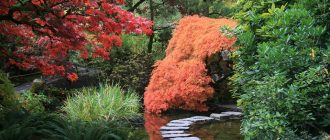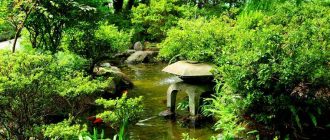Find out the unique physical features that make the coral bark Japanese maple an excellent addition to any garden.
The family of oriental trees classified as the Japanese maples is one of the most extensive and popular group of trees found in Asia. Ever since the west has been experiencing its new found fascination with Japanese gardens the popularity of the Japanese maple tree family has soared to new heights on a global level.
This extensive family of trees consists of many wonderful varieties that have the potential to work wonders in a Japanese garden. From their trunks and barks to their stems, leaves and flowers the entire collection is a sign of God’s artistry. Add to that the brilliant colour palette that the leaves of the maple family have and you have an invaluable collection of nature’s aesthetics.
Amongst the many different varieties under the umbrella of the maple trees is the Coral bark Japanese maple tree. This unique variation is known as Sango Kaku in Japanese language. So what sets this maple tree apart from the rest of the family?
The most striking feature of the coral bark Japanese maple tree is the colour of its bark. Whereas ordinary trees have earthly colored barks this unique specimen showcases a red bark that makes it stand out from the rest of the crowd. The bark catches on the red color towards the fall and winter season.
Coral bark leaves
The tree sprouts forth green leaves in contrast to the red bark. During the unfolding stages of the new leaves tints of red and pink are also visible. By mid summer the leaves come into their own and develop a mid green colour.
The coral bark Japanese maple has such a beautiful metamorphosis that one actually wishes they had the time to sit and witness the tree grow from a seed into its own form. The entire drama however takes quite long but is nonetheless spectacular. The coral bark with its small to medium size is a highly attractive tree and a popular choice for Japanese gardens.
With regards to growing the coral bark maple tree the difficulty level is minimal. In fact the coral bark is perhaps one of the easiest maple trees to grow from seedlings. One must however be educated about the kind of environment and care that the coral bark requires in order to thrive as a tree.
Ideally the tree prefers a semi-shaded environment. It needs some afternoon shade especially during hot summers because excessive exposure to the sun may cause it harm. A yearly dose of slow release fertilizer will suffice for the trees growing needs. Exceeding this limit with the idea of hastened growth could be hazardous for the tree’s health.
The Sango Kako as it is known in Japan is not a tree that is to be restricted to a Japanese garden. Rather you can plant this tree in your garden or backyard irrespective of whether it has a Japanese theme or not. The tree looks truly amazing in areas that receive snowfall during the winter as the red bark of the tree contrasts with the white snow to produce an excellent visual effect.




